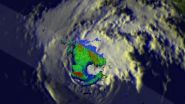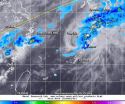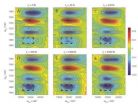(Press-News.org) PITTSBURGH—Simply put, engineers make things. But is finding that "new" invention a massive mental leap from point A to point B, or are there scores of unnoticed intermediate steps in between?
The University of Pittsburgh's Joel Chan and Christian Schunn say that not enough has been done to understand how engineers create. Understanding the process, they say, may provide a road map for speeding up innovation.
Chan, a graduate student in psychology in Pitt's Kenneth P. Dietrich School of Arts and Sciences, and his mentor Schunn, a professor of psychology as well as a senior scientist in Pitt's Learning Research and Development Center, recently published a paper online in the journal Cognitive Science that delves into the workings of the creative engineering mind by examining the process in real life.
"Most companies make all their money on new products," Schunn says. "They barely break even on old products. They have to innovate to be viable, and that's a hard path to follow."
In the pursuit of innovation, Schunn says, companies pay big money to consultants to help spur creativity. "But little of what they do is based on research," he adds.
So, along with Chan, Schunn used multiple hours of transcripts of a professional engineering team's "brainstorming" sessions and broke down the conversation systematically, looking for the path by which thought A led to thought B that led to breakthrough C.
"We want to understand the nature of cognitive limitations," Schunn says. "Why do we get stuck (on an idea), what kinds of things get us unstuck, and why do they work?"
What they found in the sessions they studied is that new ideas didn't spring fully formed after massive cognitive leaps. Creativity is a stepwise process in which idea A spurs a new but closely related thought, which prompts another incremental step, and the chain of little mental advances sometimes eventually ends with an innovative idea in a group setting.
Channeling Thomas Edison's dictum that genius is 1 percent inspiration and 99 percent perspiration, Schunn concludes that "inspiration creates some … perspiration."
So, thus far, the lesson seems to be that if you're not making creative progress, don't wait for a bolt from the blue, keep talking to your peers, and keep sweating.
INFORMATION:
Contact:
Joe Miksch, University of Pittsburgh News Services
[412-624-4356 (office); 412-997-0314 (cell); jmiksch@pitt.edu]
Pitt psychology researchers explore how engineers create
They find it's not so much 'eureka' moments as it's the sweat of one's brow
2014-06-17
ELSE PRESS RELEASES FROM THIS DATE:
Barriers to obtaining gene expression profiling test heightened perceived value
2014-06-17
Barriers to obtaining gene expression profiling test heightened perceived value among patients, new study says
TORONTO, June 17, 2014—Barriers to obtaining gene expression profiling tests heightened their perceived importance among patients with early breast cancer who were deciding whether to have chemotherapy, a new study says.
Gene expression profiling tests, such as Oncotype Dx, analyze the patterns of 21 different genes within cancer cells to help predict how likely it is that a women's cancer will recur within 10 years after initial treatment and how beneficial ...
TRMM eyes rainfall in dissipating former Hurricane Cristina
2014-06-17
VIDEO:
On June 14, NASA's TRMM satellite found rain falling at a rate of almost 97 mm (about 3.8 inches) per hour in the northwestern side of Cristina's eye wall where...
Click here for more information.
NASA and the Japan Aerospace Exploration Agency's Tropical Rainfall Measuring Mission or TRMM satellite passed over a dissipating former Hurricane Cristina and found it still contained heavy rain as it rapidly weakened.
Hurricane Cristina had sustained winds of over 130 ...
Tropical depression Hagibis gets a second chance
2014-06-17
Tropical Depression Hagibis appeared out for the count when it made landfall along southeastern China on June 16, but moved back into the South China Sea where it regenerated and sped northeast through the East China Sea. The next day, the TRMM satellite noticed power had come back to Hagibis in the form of some moderate rainfall in the depression's northeastern quadrant.
On June 17 at 10:30 UTC (6:30 a.m. EDT) the Tropical Rainfall Measuring Mission or TRMM satellite passed over the regenerated Hagibis and the Precipitation Radar instrument gathered data on the storm's ...
Sleep education program spurs preschoolers to snooze 30 minutes longer at night
2014-06-17
Ann Arbor, Mich. — Taking part in an educational sleep program resulted in a 30-minute average increase in sleep duration at a one-month follow-up for preschoolers, according to a new study from the University of Michigan.
In the study, published in the journal SLEEP, families in two Head Start programs participated in the Sweet Dreamzzz Early Childhood Sleep Education Program™. The Detroit-area nonprofit organization, Sweet Dreamzzz, Inc. developed the program and offers it for free when funding allows. Head Start programs aim to give preschool opportunities to low-income ...
Dynamic spectroscopy duo
2014-06-17
From allowing our eyes to see, to enabling green plants to harvest energy from the sun, photochemical reactions – reactions triggered by light – are both ubiquitous and critical to nature. Photochemical reactions also play essential roles in high technology, from the creation of new nanomaterials to the development of more efficient solar energy systems. Using photochemical reactions to our best advantage requires a deep understanding of the interplay between the electrons and atomic nuclei within a molecular system after that system has been excited by light.
A major ...
Why species matter
2014-06-17
UC Santa Barbara doctoral candidate Caitlin Fong travels to French Polynesia often but not for vacation. She goes there to study a coral reef ecosystem influenced by human impacts such as overfishing and nutrient pollution.
Her work focuses not only on biological changes but also methods scientists use to determine within-group group responses to ecological processes. The findings are published in ESA Ecology, a journal of the Ecological Society of America.
Fong and Peggy Fong, a professor in UCLA's Department of Ecology and Evolutionary Biology, conducted a study assessing ...
Not so fast -- our fishy friends can also feel pain
2014-06-17
Do you still believe that fish are dumb and cannot feel pain? That we do not have to worry much about how they are cared for or caught? Think again, says Culum Brown of Macquarie University in Australia, in a review article in Springer's journal Animal Cognition. The research notes that fish cognition and their sensory perception are generally on par with that of other animals. Brown therefore argues that more consideration should be given to fish welfare and anti-cruelty issues.
The Australian researcher says that most people rarely think about fish other than as food, ...
$2.4 million NIH center grant to develop a cleaner, healthier environment in Detroit
2014-06-17
DETROIT — With over $2.4 million in new federal funding, Wayne State University researchers, regional collaborators at Henry Ford Health System, the University of Michigan and Michigan State University, and community partners will study how exposures to stressors that are prevalent in the urban industrialized environment — both chemical and non-chemical — impact human health in Detroit and beyond.
The grant, Center for Urban Responses to Environmental Stressors (CURES), is one of approximately 20 select P30 Core Centers funded by the National Institute of Environmental ...
Do 'walkable' neighborhoods reduce obesity, diabetes?
2014-06-17
June 17, 2014 (San Francisco) – People who live in neighborhoods that are conducive to walking experienced a substantially lower rate of obesity, overweight and diabetes than those who lived in more auto-dependent neighborhoods, according to a pair of studies presented at the American Diabetes Association's 74th Scientific Sessions®.
Researchers in Canada compared adults living in the most and least "walkable" metropolitan areas in southern Ontario and found a lower risk of developing diabetes over a 10-year period for those who lived in neighborhoods with less sprawl, ...
Heparin derivative suppresses neuroblastoma tumor growth
2014-06-17
DURHAM, N.C. -- Researchers at Duke Medicine have identified a new strategy for treating neuroblastoma using a modified version of heparin, a century-old injectable drug that thins the blood to prevent clots from forming.
The study, conducted in mice and published June 17, 2014, in the Journal of Clinical Investigation, found that when heparin is altered to remove its blood-thinning properties, it can suppress and shrink neuroblastoma tumors without causing severe bleeding.
"Our research translates mechanistic insights about heparin into a potential new therapy for ...
LAST 30 PRESS RELEASES:
Structure of dopamine-releasing neurons relates to the type of circuits they form for smell-processing
Reducing social isolation protects the brain in later life
Keeping the heart healthy increases longevity even after cancer
Young adults commonly mix cannabis with nicotine and tobacco
Comprehensive review illuminates tau protein's dual nature in brain health, disease, and emerging psychiatric connections
Book prepares K-12 leaders for the next public health crisis
Storms in the Southern Ocean mitigates global warming
Seals on the move: Research reveals key data for offshore development and international ecology
Sports injuries sustained during your period might be more severe
World's first successful 2 Tbit/s free-space optical communication using small optical terminals mountable on satellites and HAPS
Can intimate relationships affect your heart? New study says ‘yes’
Scalable and healable gradient textiles for multi‑scenario radiative cooling via bicomponent blow spinning
Research shows informed traders never let a good climate crisis go to waste
Intelligent XGBoost framework enhances asphalt pavement skid resistance assessment
Dual-function biomaterials for postoperative osteosarcoma: Tumor suppression and bone regeneration
New framework reveals where transport emissions concentrate in Singapore
NTP-enhanced lattice oxygen activation in Ce-Co catalysts for low-temperature soot combustion
Synergistic interface engineering in Cu-Zn-Ce catalysts for efficient CO2 hydrogenation to methanol
COVID-19 leaves a lasting mark on the human brain
Scientists use ultrasound to soften and treat cancer tumors without damaging healthy tissue
Community swimming program for Black youth boosts skills, sense of belonging, study finds
Specific depressive symptoms in midlife linked to increased dementia risk
An ‘illuminating’ design sheds light on cholesterol
Who is more likely to get long COVID?
Study showcases resilience and rapid growth of “living rocks”
Naval Research Lab diver earns Office of Naval Research 2025 Sailor of the Year
New Mayo-led study establishes practical definition for rapidly progressive dementia
Fossil fuel industry’s “climate false solutions” reinforce its power and aggravate environmental injustice
Researchers reveal bias in a widely used measure of algorithm performance
Alcohol causes cancer. A study from IOCB Prague confirms damage to DNA and shows how cells defend against it
[Press-News.org] Pitt psychology researchers explore how engineers createThey find it's not so much 'eureka' moments as it's the sweat of one's brow





